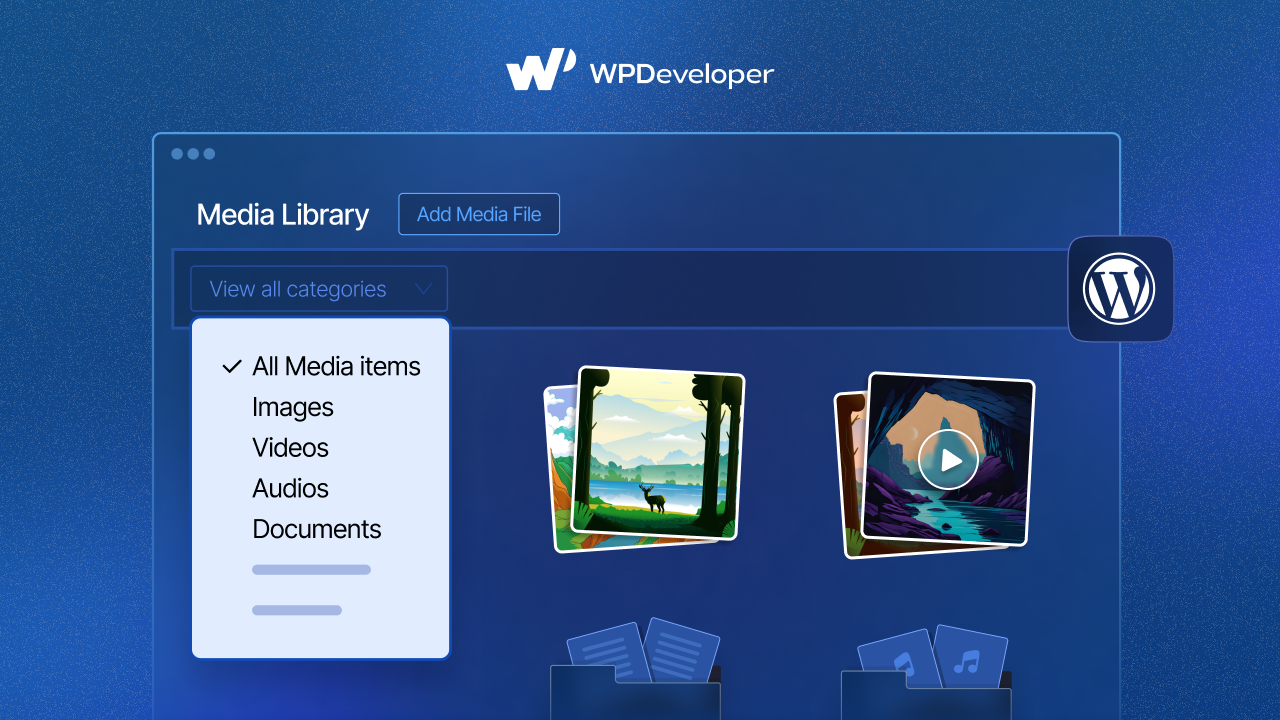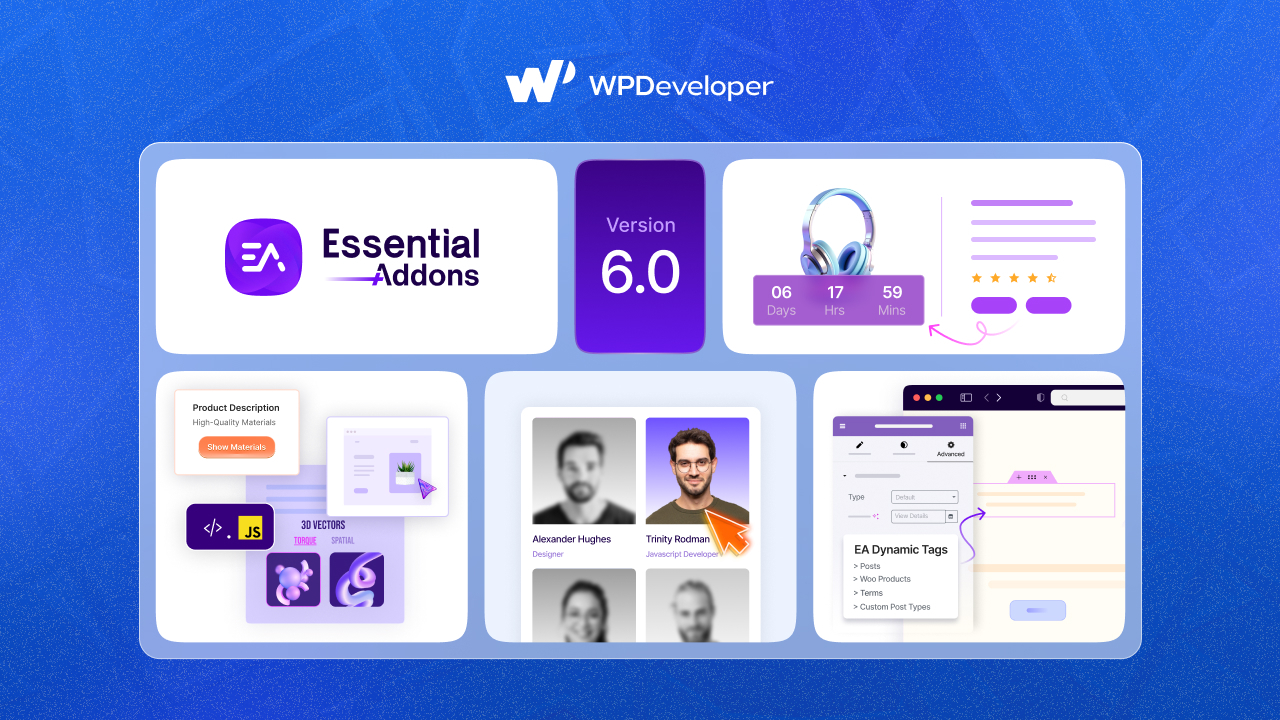With the rapid introduction of advanced AI into our daily workflows, the digital landscape is evolving faster than ever and developments to the WordPress ecosystem and platform are no exception.
If you are looking for a one-stop source to explore the latest and most impactful trends shaping WordPress in 2025, you are in the right place. We have gathered insights from reliable, up-to-date sources to bring you a clear picture of what is trending in WordPress development this year. Let’s dive right in to discover the emerging innovations redefining how we build with WordPress.

The Current State of Website Platforms in 2025: Who is Leading the Market Right Now?
Before delving into WordPress development trends, let us first examine the current CMS (or website platform) landscape.
In one word, WordPress is the most popular, free, open-source content management system (CMS), as of 2025. However, there are other platforms used to create powerful websites too, such as Drupal, Joomla, Shopify and Webflow – but none comes near the power, flexibility, ease of use and dominance of WordPress.
As of mid 2025, WordPress still dominates the CMS ecosystem – maintaining its long standing position as the leader in the ecosystem, roughly powering up 43–44% of all websites globally. Its closest competitors are Shopify (primarily for eCommerce), Wix and Squarespace, which together account for the majority of the remaining market, ranging from 3-7%. But the interesting difference among these platforms is their subscription models – while WordPress remains FREE as always, all of the other platforms mentioned offer premium subscription plans.
Meanwhile, the traditional open‑source PHP CMS platforms are shrinking: Joomla has declined to about 2% and Drupal to 1–1.2% of all CMS-based sites. In comparison to their massive presence in the mid-2010s, Joomla and Drupal now have only about 3% of the market share combined.
But what puts WordPress ahead of the others? The significant position at 43-44% of all websites is due to its super user-friendly interface, adaptability to all the latest technologies and trends, including AI-powered enhancements, among others. Drupal, like WordPress, has also introduced AI enhancements and the “Starshot” initiative while remaining a versatile and enterprise-grade engine. Joomla persists but trends toward a small, loyal user base amid slower innovation cycles.
So, in 2025, if you want to create a website, you should undoubtedly go with WordPress.
[2025] Latest Trends in WordPress Development at a Glance
In recent years, WordPress has embraced a wave of innovation that promises to transform the way websites are built and experienced. In a tech-savvy, user-focused world, this year’s trends highlight a CMS that’s adapting to AI tools and headless architecture. Today we will take a look at the trends affecting WordPress this year. In this snapshot, we look at how WordPress is adapting and leading in 2025.
1. Integrating AI in WordPress Workflows
Until now, AI has not been integrated into the core WordPress infrastructure. However, WordPress co-founder Matt Mullenweg has announced the formation of the WordPress AI team, which will work tirelessly to incorporate AI into the WordPress workflow. AI tools are already being used to speed up the development process, sanitize the code and so on. As a result, AI has emerged as the most recent WordPress development trend.
Big names in WordPress, such as Elementor, Divi, Essential Addons, JetPack, etc., are providing enhanced features with AI power. You can now create a form with custom fields with AI, write blogs, generate images, create documentation, provide customer support, etc. in WordPress. All the advanced plugins are bringing AI into their functionality to streamline users’ workflow.
2. Accelerating Headless WordPress Architecture
One of the most significant trends in WordPress development for 2025 is the rapid adoption of headless architecture. For those unfamiliar with the term, “Headless” refers to the separation of the front end (what visitors see) and the back end of WordPress. A headless approach, as opposed to traditional setups in which WordPress controls both content and design, transforms WordPress into a powerful content hub while allowing developers to build lightning-fast, highly interactive front ends using modern frameworks such as React, Vue.js, or Next.js, all connected via WordPress APIs.
A major player driving this shift is GraphQL. While the default WordPress REST API frequently sends large, unnecessary data payloads, GraphQL allows developers to request only the information they require, increasing data retrieval efficiency. This leads to faster load times, better performance and a more enjoyable user experience.
Beyond publishing, this approach is gaining traction in WooCommerce-powered online stores, allowing for smarter, faster content delivery and more scalable shopping experiences. As the trend in WordPress development grows, headless architecture is becoming the go-to solution for businesses seeking speed, flexibility and future-ready website performance.
3. Maturing Block Theme Development
The Block Editor is no longer an experimental feature; it has become an essential component of modern WordPress development. One of the most notable trends in WordPress development in 2025 will be the widespread adoption of block themes. These themes are fully compatible with the Site Editor, feature fluid responsive layouts and make it easier than ever to manage global styles without the need for traditional PHP templates or heavy custom CSS.
Developers now rely heavily on theme.json and block.json files to specify design rules such as spacing, color palettes, typography and layout structure. This approach not only accelerates development but also ensures design consistency across entire projects, making handoffs to clients or teams cleaner and more reliable.
Custom block development has also matured significantly. Tools like ACF Blocks enable developers to quickly create bespoke, highly functional blocks that combine the flexibility of the Block Editor with the power of custom fields. As a result, the block-based ecosystem is changing the way themes are designed, providing scalability, improved performance and future-proof site-building capabilities.

Pattern libraries are becoming an essential part of modern WordPress development, enabling designers and developers to create consistent, reusable design elements with ease. As WordPress continues to evolve, adopting a well-organized pattern library has become a key trend for building scalable, efficient, and cohesive websites.
4. Evolving the Full Site Editor
Originally introduced to make block theme customization more intuitive, the Full Site Editor (FSE) has come a long way. And in 2025, it continues to be a key trend in WordPress development. What started as a tool primarily for default block themes is now evolving to support a wider variety of themes, making it easier for developers and non-technical users alike to design entire websites visually, without touching code.
Recent WordPress releases have introduced powerful enhancements, such as the Style Book, which allows users to preview and adjust typography, colors and global design elements across all blocks in one centralized interface. Any block-based theme can now be easily customized via the Full Site Editor, giving site builders more flexibility and consistency in managing design systems.

Accessibility improvements are also on the roadmap, ensuring that the Full Site Editor works seamlessly for all users, including those relying on screen readers or keyboard navigation. With upcoming releases promising even deeper design controls, streamlined workflows and better third-party block integrations, the Full Site Editor is evolving into a full-fledged visual site builder, bridging the gap between no-code flexibility and developer-level control.
5. Enhancing WordPress Security
WordPress is no longer just about creating visually appealing websites; it is also about keeping them safe in an increasingly dangerous digital world. According to Check Point Research’s Q2 2024 report, cyberattacks increased by 30% year on year, making cybersecurity a top priority for website owners, developers and even casual bloggers. WordPress, as one of the most popular CMS platforms, remains a prime target for hackers, but it is also evolving quickly to keep up with threats. This increased emphasis on protection has made security a key trend in WordPress development in 2025.
Security is now built into the development process rather than being added later. Whether you are creating a small personal blog or managing hundreds of enterprise websites, higher security standards are now the norm.
- Multi-Factor Authentication (MFA) has become a baseline requirement, with managed hosting providers like Kinsta and xCloud offering built-in MFA tools to protect admin accounts and ensure regulatory compliance.
- Security plugins such as Wordfence, Sucuri and Patchstack continue to evolve, providing real-time threat monitoring, login protection, firewall controls and automated malware scanning.
- On the developer side, command-line tools like WP-CLI are widely used to audit installations, detect outdated plugins and enforce clean, secure site environments as part of routine workflows.
- Compliance has become another critical factor. Many plugins and integrations now include out-of-the-box support for GDPR, CCPA and HIPAA, making it easier for businesses to meet global privacy requirements without having to reinvent the wheel.
6. Making Accessibility a Core Focus
Web accessibility has become an unavoidable concern for businesses and developers. Globally, approximately one billion people live with disabilities, making inclusive design not only ethical but also necessary. Ensuring that websites work for all users, from screen-reader users to those navigating by keyboard, is now a critical trend in WordPress development.
Starting with recent releases like 6.7 and especially 6.8 (“Cecil”), WordPress has significantly enhanced accessibility across the platform. Built-in UI enhancements include shortkeys, descriptive labels, restored heading semantics in the Customizer and more intuitive screen-reader feedback. This reflects a growing emphasis on creating themes and workflows that are inherently accessible from the beginning.
7. Developer Experience And Tooling Evolution
The WordPress developer stack has transformed dramatically in recent years and by 2025, one major trend in WordPress development is the shift toward a faster, more automated and highly integrated workflow. Today’s WordPress professionals leverage a modern toolset designed to streamline everything from local development to production deployment.
On the command line, WP-CLI continues to be a go-to utility for scripting updates, resetting databases, managing multisite setups and scaffolding custom plugins. Many teams now adopt Bedrock or Trellis to create standardized, environment-aware configurations, ensuring consistency and security across development, staging and production servers.
CI/CD pipelines are no longer just a best practice; they are the norm. Paired with Git-based workflows, tools like GitHub Actions, GitLab CI and Bitbucket Pipelines automatically test, deploy and monitor site changes, reducing human error and speeding up release cycles.

Furthermore, artificial intelligence-assisted development tools such as GitHub Copilot, Cursor and next-generation IDE extensions are changing the way developers write code. These tools recommend optimized snippets, detect potential bugs quickly and even generate documentation on the fly. As a result, codebases become cleaner and projects are launched more quickly.
The result is a smarter, more predictable development process, where automation and AI work hand in hand with WordPress’s flexibility. This evolution is not just improving workflows; it’s redefining what efficient, scalable WordPress development looks like in 2025.
Power Up Your Website with the Latest WordPress Development Trends
In 2026 and beyond, WordPress development will be more advanced, effective and adaptable than before. AI is incorporated into daily workflows and block-first builds are now the norm. WordPress’s capabilities are being expanded by headless, composable and multisite architectures.
Developers can deliver projects faster and scale with confidence thanks to improved performance, increased security and more intelligent tools. Working with the right stack and hosting partner is critical for staying ahead of these trends, whether you are managing a portfolio of popular websites, developing for clients, or running a growing SaaS product.
Do you want to stay up-to-date with insightful articles like this? Then subscribe to our blog today to follow the latest trends and tips.






